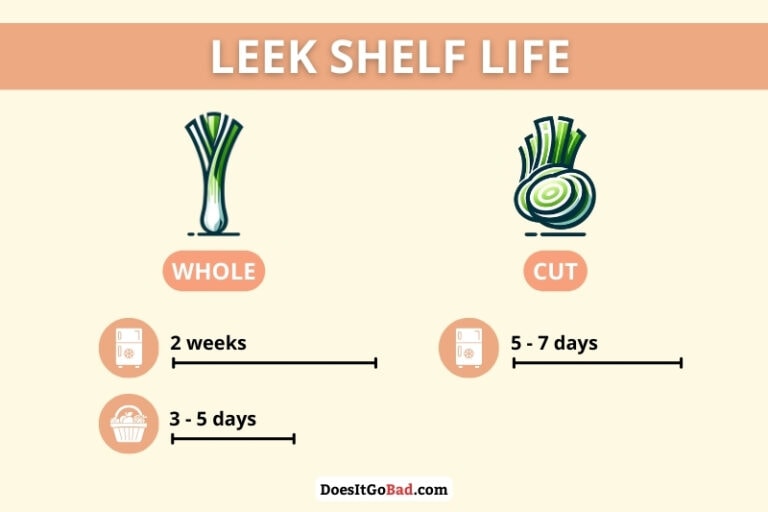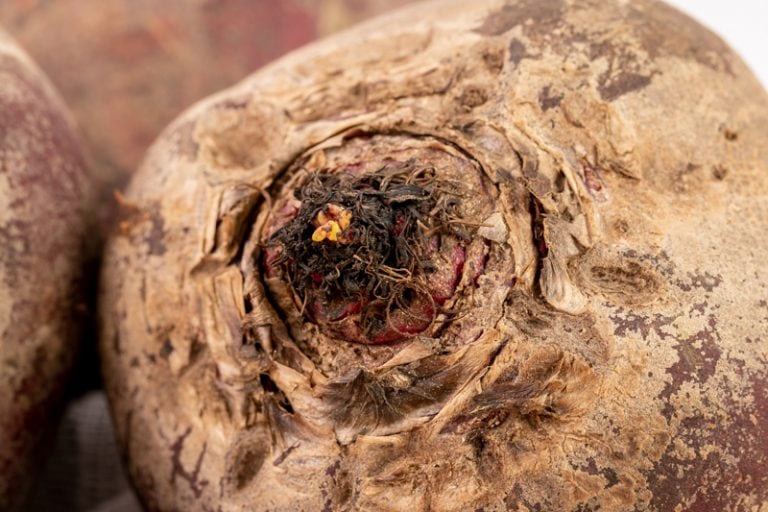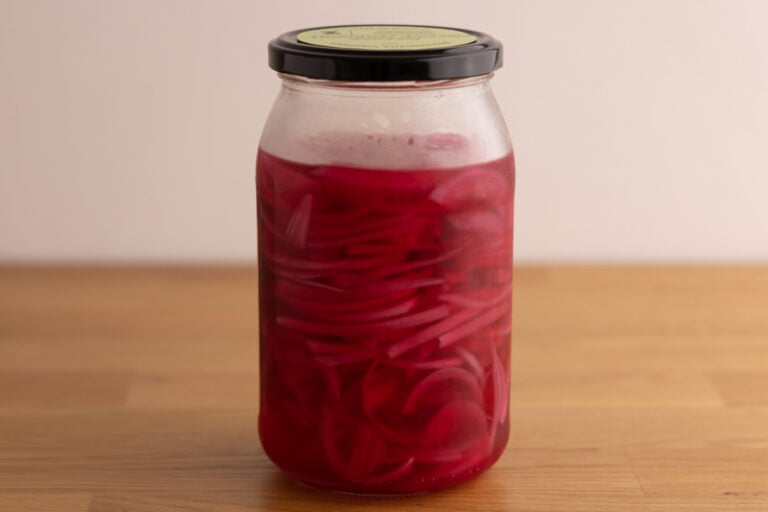How Long Does Spinach Last? [+ Tips to Make It Last Longer]
Got a bag of spinach and want to know how long until it wilts and goes bad? How long does spinach last?
In this article, we cover everything you need to know about the shelf life of spinach, along with some tips on storing it.
Let’s jump right in.
How Long Does Spinach Last?
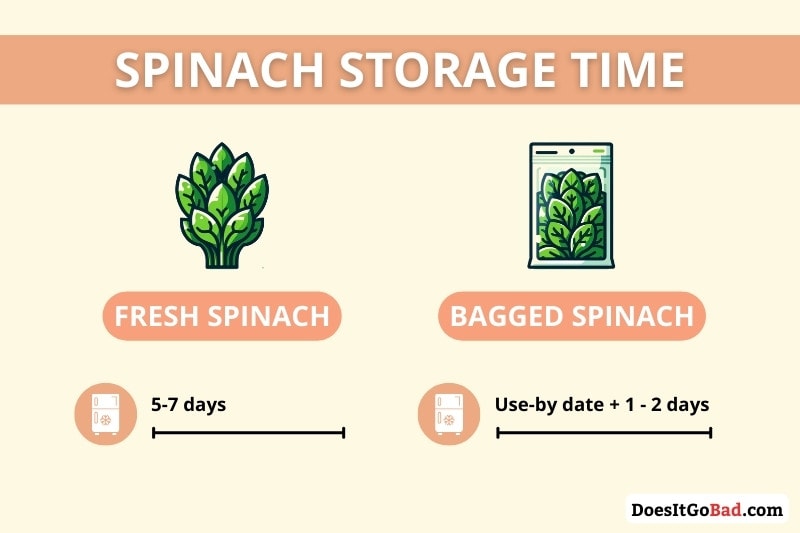
Fresh spinach typically lasts 5 to 7 days in the fridge, but its shelf life can be as long as 14 days if you store spinach the right way. To get the most out of the leafy green, place it in a perforated plastic bag in the crisper drawer or wrapped in moist paper towels in a freezer bag.
Spinach is a plant with a fairly limited shelf life. It will wilt and spoil quickly, especially if you leave it unwrapped in a dry place, like on a fridge shelf.
The 14-day period mentioned above is about all you can get, and many sources suggest using fresh spinach leaves within only 3 to 5 days for optimal freshness.
Now, you might be wondering if there are any differences in the shelf life of bagged and fresh spinach. Let’s talk about that.
Bagged vs. Fresh Spinach
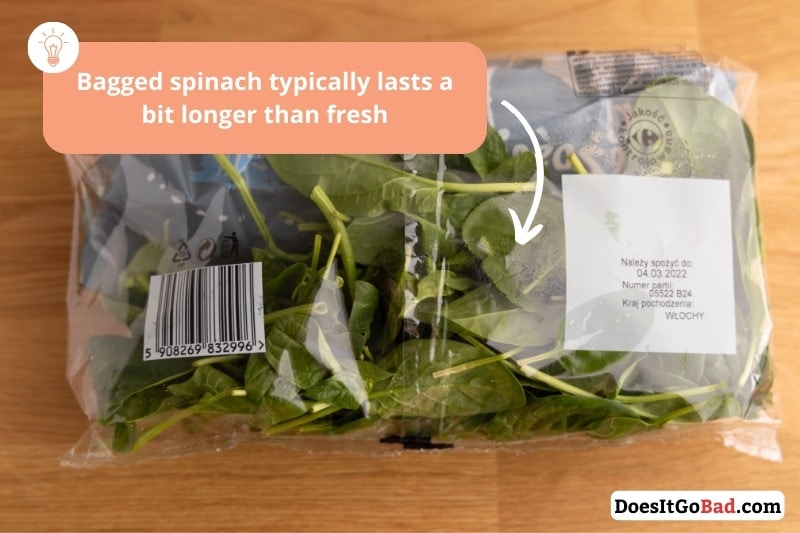
Bagged spinach comes with a use-by date printed on the label, and that date is typically 7 to 10 days from the day you buy it. You might get a couple extra days if you leave the bag sealed or follow good storage practices. After opening the bag, your spinach will keep for 3 to 7 days in a half-open bag in the crisper drawer or wrapped in moist paper towels.
(We talk about a few storage tips towards the end of the article.)
In other words, bagged spinach lasts longer than fresh bunches you can buy at a farmer’s market. So, if you often end up with bad spinach, perhaps switching to pre-washed bagged spinach is a better option for you.
Now, what if your spinach bag is already “expired?” Should you still use it?
Expired Spinach
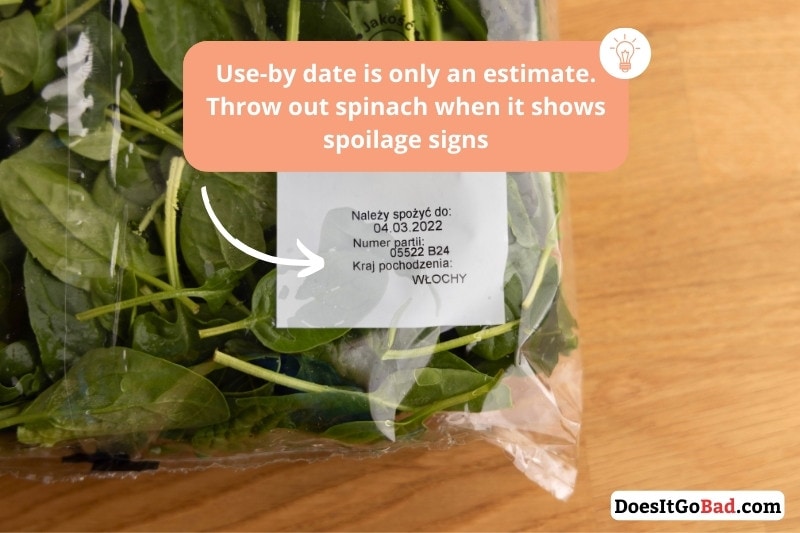
Your out-of-date spinach is okay to eat as long as it doesn’t show any of the typical spoilage signs for spinach. The date on the label is only a rough estimate of how long the greens will last and not an expiration date. If there are no slimy leaves or mold growth, and the whole bag doesn’t smell off, the spinach is probably fine.
Sure, some sources may urge you to observe the use-by dates printed on bagged spinach, but that doesn’t mean you should toss the leafy greens the day after the printed date. As long as the quality of the greens is okay, you can use them.
(As usual, be reasonable and stay safe. Food poisoning is no joke.)
That said, if you’re eating spinach mainly for its nutrients, you should eat it as fresh as possible.
That’s because the nutrient profile of spinach degrades over time relatively quickly, according to Penn State University:
That seven-day-old bag of spinach in your refrigerator may not make you as strong as your grandma told you, because, according to Penn State food scientists, spinach stored for a long time loses much of its nutrient content.
In other words, the fresher you eat it, the better it is for you.
Cooked Spinach
Allow cooked spinach to cool to room temperature, then transfer it to an airtight container or freezer bag and refrigerate for 3 to 4 days. Remember not to cool the cooked dish for longer than 2 hours to keep it safe.
(That’s also how long kale lasts after cooking.)
If you need more time, freezing spinach is also an option, but the results depend heavily on what sort of dish that is. For instance, most casseroles and stews freeze perfectly fine.
Once you cook the leafy vegetable, there’s no extra setup needed before you freeze spinach. All you need to do is divide the cooked spinach into meal-sized portions, transfer each into a plastic container or plastic bag, and freeze.
Does Spinach Need to be Refrigerated?
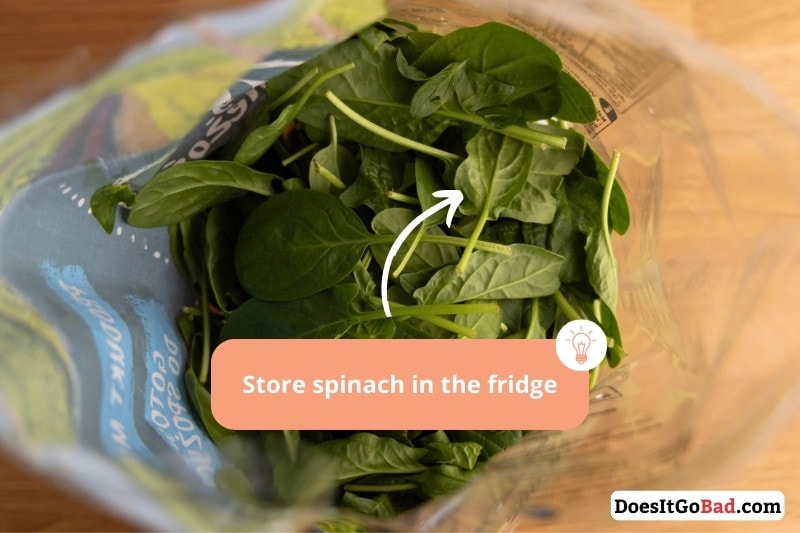
The fridge is the best place to store spinach. Refrigerated spinach leaves will retain quality for 7 up to 14 days, while sitting out at room temperature, they’ll wilt after only a day or two of storage. So unless you will use them the same day you buy them, place the bag in the fridge.
(That’s also why bagged spinach is usually in the refrigerated section, not the produce aisle.)
Fresh, raw spinach quickly loses quality, so throw it in the fridge once you get home from the grocery store or farmers’ market.
Tips to Make Spinach Last Longer

Looking to extend the shelf life of your spinach? Here are a couple of storage tips:
- If yours isn’t prewashed, don’t wash spinach until right before you use it. Washing the spinach leaves early may cause the leafy green vegetable to go bad prematurely if you don’t dry it thoroughly.
- Store it away from ethylene producers such as bananas and apples, informs the Utah State University. If they need to be stored nearby, ensure spinach is tightly sealed so it’s not getting “gassed.”
- Once opened, consider loosely wrapping spinach leaves with a damp paper towel, University of Nebraska suggests. That paper towel helps maintain the humidity in the bag and catches any water drops. Alternatively, leave a small portion of the plastic bag open so air can circulate. That allows the spinach to get rid of excess moisture, and that’s why spinach is often sold in perforated bags.
- You can freeze spinach. Blanch the leaves for 2 minutes, stop the cooking process by submerging them in an ice water bath, drain, and package them into freezer bags or resealable containers before chucking them into the freezer.
If your spinach regularly goes bad, switch to frozen spinach. You can use it whenever you want and don’t have to worry about it going bad.
Knowing that, you might ask yourself: What if I already washed my spinach?
The answer is simple: let it dry on kitchen towels or use a salad spinner, then wipe any remaining moisture using paper towels before refrigerating it. This way, your spinach should be reasonably dry and don’t spoil due to excess moisture.
Rotten Records: Share Your Snap!
Caught some food past its prime? Upload your photo to “Rotten Records” and help others spot the signs of spoilage. Every image makes our food community safer and more informed!


